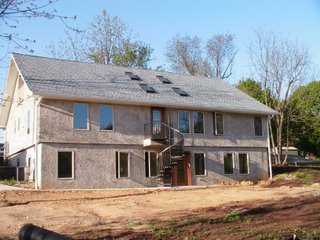Energy Efficient Home Yields a Substantial Return on Investment
What is the best real estate investment one can make in the 21st century?
An Ecobuilt™ energy efficient home is the answer. What is this? It is the entire outside surface design/building envelope/thermal package of the building you live or work in. This also includes the ground under your home that will actually draw the heat from within the home. Earth under a home is generally around 50 degrees give or take a little and is usually at a constant temperature.
Data from the Carter administration on solar housing produced results indicating one very important factor in making solar work. Solar (sun) effectiveness was directly related to how well the thermal value of the building envelope functioned. As long as the building package kept the heat in and the cold out in the winter compared to a similar type home of conventional construction minus the features to make the consumption of energy less then it was more suitable for solar to supply the heat needed to warm the house through the winter. Other features are also very essential for the warm comfort through the winter months and the Energy Efficient Home Team™ has designed features in their Ecobuilt™ energy efficient home to make their homes more comfortable and for optimum best known health concerns such as mold and good air quality.
If you could have the sun supply all the heat and cooling you need to be comfortable year-round what would that be worth to you? Usually what you pay out for that line item for utilities would be your response. You must calculate what that same amount of money would earn you if invested in something else. No doubt utility costs will keep rising. The Energy Efficient Home Team™ determined back in 1990 that an Ecobuilt™ energy efficient home would pay the cost of buying an Ecobuilt™ home by the savings.
Not only is the home you live in one of the largest investments in your life it is one of the largest consumers of energy in your budget. Some home mortgage costs are equal to the home’s heating bills per month in the winter. This is like paying for two mortgages. Make your home an Ecobuilt™ energy efficient home and your return on investment will be significant.
If all homes were Ecobuilt™ we wouldn’t have an energy crisis.
Copyright © 2006, by Dennis Maq & Siti M Crook, Energy Efficient Home Team™
An Ecobuilt™ energy efficient home is the answer. What is this? It is the entire outside surface design/building envelope/thermal package of the building you live or work in. This also includes the ground under your home that will actually draw the heat from within the home. Earth under a home is generally around 50 degrees give or take a little and is usually at a constant temperature.
Data from the Carter administration on solar housing produced results indicating one very important factor in making solar work. Solar (sun) effectiveness was directly related to how well the thermal value of the building envelope functioned. As long as the building package kept the heat in and the cold out in the winter compared to a similar type home of conventional construction minus the features to make the consumption of energy less then it was more suitable for solar to supply the heat needed to warm the house through the winter. Other features are also very essential for the warm comfort through the winter months and the Energy Efficient Home Team™ has designed features in their Ecobuilt™ energy efficient home to make their homes more comfortable and for optimum best known health concerns such as mold and good air quality.
If you could have the sun supply all the heat and cooling you need to be comfortable year-round what would that be worth to you? Usually what you pay out for that line item for utilities would be your response. You must calculate what that same amount of money would earn you if invested in something else. No doubt utility costs will keep rising. The Energy Efficient Home Team™ determined back in 1990 that an Ecobuilt™ energy efficient home would pay the cost of buying an Ecobuilt™ home by the savings.
Not only is the home you live in one of the largest investments in your life it is one of the largest consumers of energy in your budget. Some home mortgage costs are equal to the home’s heating bills per month in the winter. This is like paying for two mortgages. Make your home an Ecobuilt™ energy efficient home and your return on investment will be significant.
If all homes were Ecobuilt™ we wouldn’t have an energy crisis.
Copyright © 2006, by Dennis Maq & Siti M Crook, Energy Efficient Home Team™


